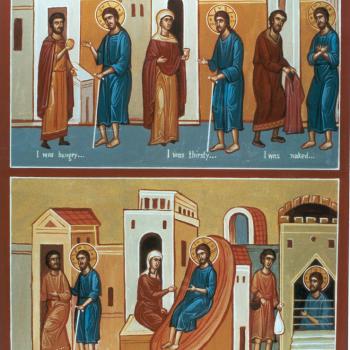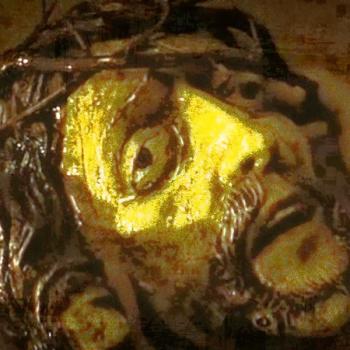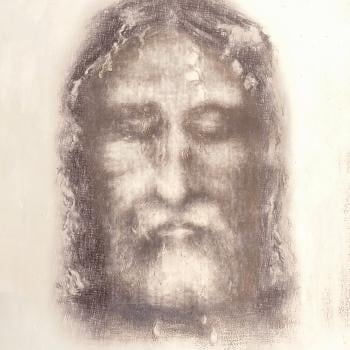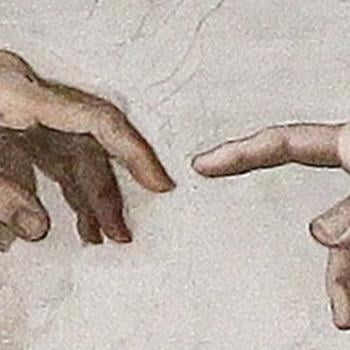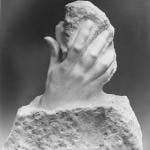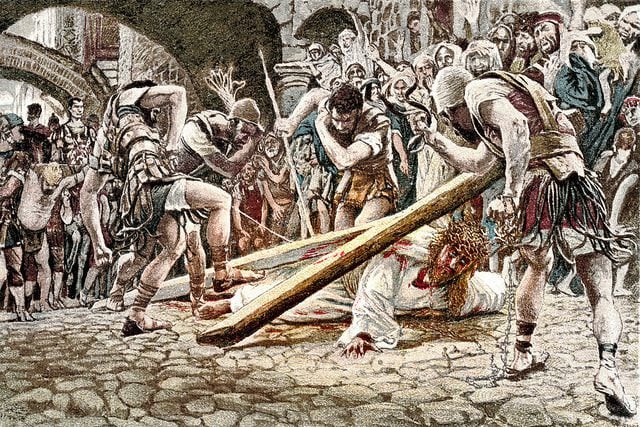
Every mother who ever went to the airport to see her son or daughter off to war …
Every mother who ever sat beside her child’s bed while the chemo dripped into the port in their chest …
Every mother who ever buried a son or daughter who was murdered by a random stranger, in a mass shooting, or, perhaps worse, by a family member …
Every mother who ever grieved over the unjust cruelties visited on her innocent baby has been with Mary when she saw her child, her little boy, the baby she birthed, beaten, tortured, mocked, spat upon and broken, struggling under the weight of His cross.
Jesus carried His own cross to His crucifixion. This gives brutal meaning to His instructions to us to “pick up your cross and follow after Me.”
Christianity is not a faith for the ambitious and greedy. Jesus’ teachings have no comfort, offer no hope, for the I’ve-got-mine-now-you-get-yours crowd.
He paid the full price for being the Sign of Contradiction to the powers of this world as He staggered and fell under the weight of that cross.
Mary paid the same price, right along with Him. She gave us her child, her only babe. There is no mother anywhere who would not have felt the blows, been scalded by the humiliation and experienced the weakness and pain right along with her child.
The whip that cut into His flesh lacerated her heart. The mockery and betrayals that left Him alone, left her bereft along with Him.
He suffered. She suffered.
Mary consented to this before He was conceived. She gave Him to us at the wedding at Cana when she commissioned Him to begin His ministry.
Mary understands suffering. She is human. She knows all about fear, weakness and doubt. She has felt confusion, grief and the terrible Alone of Calvary.
Her son, her child, her baby had lost so much blood in the beating He’d received that He was too weak to carry the cross. He fell. And fell again. Hard, unbroken falls with the weight of the cross on His back, driving Him down into the paving stones.
She saw and could do nothing. Nothing.
She couldn’t take Him into her arms and flee into Egypt. She couldn’t tell Him to come home with her and be her son for a few more years. She couldn’t hold Him close and rock Him. She couldn’t kiss the hurt away.
She could do nothing. But watch. And feel the full measure of what it means to be someone’s mother.
She knew this was coming all her days. She understood that He would be a sign of contradiction to the powers and principalities, the false gods, of this world. She knew what that meant.
But knowing about a reality and actually living it are two different things. This was real. It was present. There was no softening the pain and horror of it.
Not then. Not when she saw her sweet baby fall with a bone-cracking whack against the stones, not when His blood dripped and beaded in the dust, not when the soldiers raised their whips and struck Him over and over as He lay helpless at their feet.
“Mama.”
Did He say that as He lay helpless in the carnage of His own bodily fluids smeared on the dirty stones?
Mama.
Mama is the name that people call out when they’re in extremities of pain and despair. People in nursing homes, at night, when they’re most alone, cry for their Mama. When they’re dying, the one they want to come take them home is their Mama. In nursing homes, hospitals and I would imagine on battlefields, we call for Mama. I’ve heard it. Many times.
Mama.
She was His only Mama. He was her only son. Their suffering is the price — the wages — of our sins.
Mary gave Jesus to us. She walked with Him throughout His earthly life. From His birth to the day they laid Him in a tomb, she was there.
Without her assent to this blood and suffering, brutality and death we would be lost in our sins for eternity.
She could have said “no.”
But she said “yes.”
Jesus put Himself under obedience to her from the day she intervened in His first moves into ministry when He was 12 until the wedding at Cana when she set Him on the road to what they both knew would be “His Time.”
She sent Him to this moment when, too weak and beaten to carry His cross, He fell heavily at her feet.
Even the Roman soldiers knew that they could not beat Him into rising and carrying that cross further. They’d bled the strength out of Him with their whips.
They impressed a man Scriptures name as Simon of Cyrene into service in their mission to get this crucifixion done. Simon helped Jesus carry His cross to Calvary, an honor He probably didn’t appreciate at the time.
Scripture identifies Simon as the “father of Alexander and Rufus,” a description whose familiarity implies that the whole family became Christians later on. Simon helped Jesus carry His cross to Calvary, and evidently found His salvation along the way.
Jesus never stopped saving people, not even when He was suffering the extremities of torture and death. His mother bore witness to His Passion as only a mother could, by uniting her suffering to His in a mother-child union that nothing, not even death, can break.
A thousand years before that day in Jerusalem, God turned Jesus’ ancestor Abraham back from sacrificing Isaac and by doing that gave us a powerful message that the child sacrifice of that era was wrong. But He did not stay the sacrifice of Mary’s Son, of His Son. He left Mary to drink the full meaning of sacrifice down to the last dregs. She completed what Abraham had begun in a human-divine union of grief that only a mother could feel.
She looked into the eyes of her suffering Son, and saw an eternity of human misery, desolation and pain. She saw the price and she, along with her child, paid that price.
She was His mother.
He was her Son.
His Passion and her pain were, in the way of mothers, one thing.
To learn how to pray the Rosary of the Seven Sorrows of Mary, go here.







